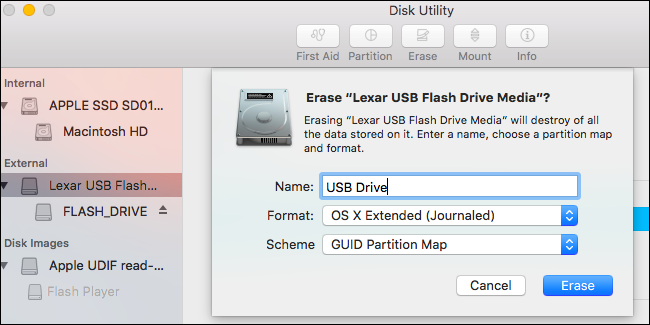You can format a hard drive on a PC or Mac using utility features.
USB drives, by default formatted into FAT32, which is compatible with both Mac and Windows. Two drawbacks on this format are that FAT32 supports maximum file size into 4GB and FAT 32 format is more susceptible to disk errors and offers no security. We strongly recommend this method for a temporary purpose file transfer. Insert the flash drive or hard drive you want to format for Windows compatibility. Go to the Applications folder on your Mac’s hard drive, then go to the Utilities folder, and launch Disk Utility. Select the drive you want to format. Warning: the following steps will delete any info you currently have on the drive.
- You may need to format a hard drive to match your computer's operating system before you can use it.
- To format a hard drive in Windows, you'll use the Disk Management utility; on a Mac, you'll use Disk Utility.
- Visit Business Insider's Tech Reference library for more stories.
If you're adding a hard drive to your computer, you probably need to format it to your computer's operating system before you can use it.
This is easy to do with built-in utilities for both Windows and Mac computers, and the process is the same whether you're formatting an internal drive installed on a desktop PC or an external drive plugged into your desktop or laptop.
Keep in mind that when you format a hard drive, it erases all the files and it can be difficult or impossible to recover them. Be careful with this command and always make sure you are choosing the right hard drive in the formatting utility.
How to format a hard drive on Windows
1. In the Start button search box, type 'Disk Management.'
2. In the search results, select 'Create and format hard disk partitions.'
Mac Flash Drive To Pc
Find the Disk Management utility in the Start button search results.
3. In the list of hard drives, right click the drive you want to format. In the pop-up menu, choose 'Format…'
4. In the Format window, choose the file system you want to use. Usually, you'll want NTFS, which is the default for Windows. Make sure there is a check next to 'Perform a quick format.'
5. When you're ready to format the drive, click 'OK.'
Format Flash Drive For Mac And Pc Large Files
You can format a drive with just a few clicks.
If you want to format your Windows system drive (the 'C' drive), you can't do that when Windows is running because the drive is in use. Instead, you can download Windows 10 to a USB flash drive using the Windows 10 Media Creation Tool and boot from that. Once you've booted Windows from the USB flash drive, you can format the C drive.
How to format a hard drive on a Mac

1. In the Finder menu, click 'Go' and then, in the drop-down menu, choose 'Utilities.'



2. In the Utilities folder, choose 'Disk Utility.'
3. In the pane on the left of the Disk Utility window, click the drive you want to format.
Format Flash Drive Mac Fat32
Select the drive you want to format and then choose “Erase.”
4. At the top of the window, click 'Erase.'
5. In the pop-up window, choose the file system you want to use. Usually, you'll want ExFAT, which is the default for the MacOS.
6. When you're ready, click 'Erase.'
If you want to format your Mac's system drive, you can't do that when the Mac is running normally because the drive is in use by the operating system. To get around that problem, hold down the Command + R keys when you turn on your Mac and let go when the logo appears. You'll see the MacOS Utilities window; choose 'Disk Utility.' Now you can choose to erase your startup drive, and choose 'Mac OS Extended (Journaled)' as the operating system.